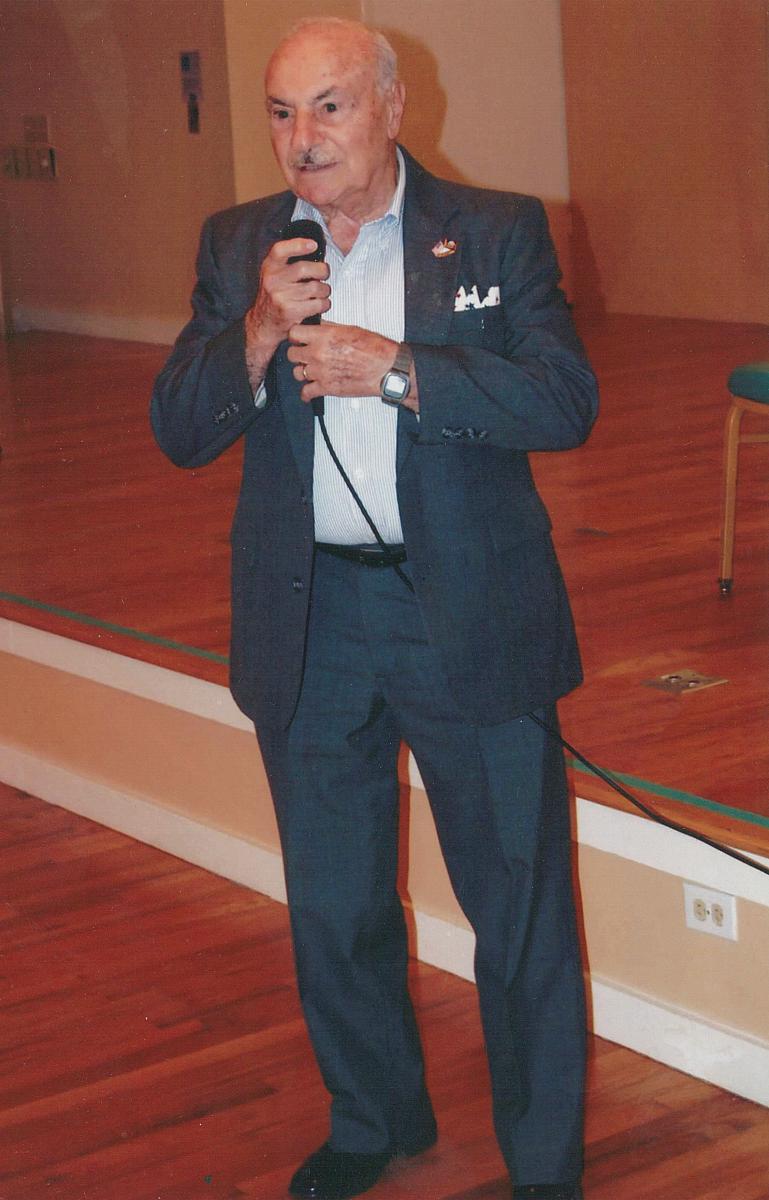During the course of a long and varied career in aerospace, computer engineering, healthcare technology and academia, Frank Leo has brought about many notable achievements.
As manager of the electronics laboratory of the Naval Research Observatory during the 1960s, he helped pioneer a new device for measuring sidereal time – which is based on determining the earth’s rate of rotation relative to the stars, rather than the sun. He was also involved in developing one of the first high-capacity computers. Later, as a NASA contractor, he worked for the famed engineer Dr. Werther von Braun and assisted with the launch of four scientific satellites.
 In 1974, he became the first engineer to be appointed as a faculty member in the radiology and radiological science department at Johns Hopkins University. He was sent to England to work with Sir Godfrey Hounsfield to understand and manufacture the first X-ray computed tomography (CT) units; serial 1 and 2 went to hospitals in London, while serial 3 went to Johns Hopkins. He assisted the Applied Physics Laboratory in developing a new method of breaking up kidney stones, and also helped plan a new layout for his department.
In 1974, he became the first engineer to be appointed as a faculty member in the radiology and radiological science department at Johns Hopkins University. He was sent to England to work with Sir Godfrey Hounsfield to understand and manufacture the first X-ray computed tomography (CT) units; serial 1 and 2 went to hospitals in London, while serial 3 went to Johns Hopkins. He assisted the Applied Physics Laboratory in developing a new method of breaking up kidney stones, and also helped plan a new layout for his department.
Now retired and living in Florida’s Ormond Beach, Frank and his wife Betty – whom he met and married in 1948 -- continue to make a difference through charitable contributions and an endowed fund that supports advanced technology in the radiology field.
It is a list of accomplishments that would make anyone proud. The driving force, Leo says, has been his desire to contribute positively to the lives of others.
“I went into engineering because I wanted to help people,” he says. “Everything that I’ve worked for has been for the betterment of man. That’s a way of life for me. Education gave me the ability to bring about what I always wanted to do, which was to help others.”
His aspirations first took shape during his wartime service. Born in New York, Leo grew up in New Jersey, where his father ran a beachfront hotel and restaurant. Fresh out of high school, he joined the Navy and served as a shipboard radioman in the Third Fleet. It was 1945, and World War II was in its final stages. Leo saw considerable action and was among those who freed British and US prisoners of war from Japanese camps.
It was his radio work that sowed the seeds for an engineering career, and Capitol Tech – as Capitol Technology University was known at the time – that provided him with a college degree. He received his B.S. in electronics engineering technology from the school in 1970.
Although he had already accumulated significant experience before enrolling at Capitol, Leo felt that his electronics training up to that point had been overly narrow. He wanted a broader knowledge base that would not only allow him to master current technologies, but create new ones.
The teachers at Capitol were “very good,” he says. “They kept abreast of what was going on. They knew their book work, and they also knew what was happening in the field.” The more he learned about electronics, the more Leo found himself asking the question “how can I improve on that?”
Understanding that accomplishment is a step-by-step process is crucial for success in any field, Leo says, reflecting on his own career trajectory. It’s important, he says, not to be overly impatient and expect everything to happen at once.
“The small things start early, and the larger things will come later. You can’t expect to do the large things right at the beginning,” he says. “You have to take your time and understand as you go.”


